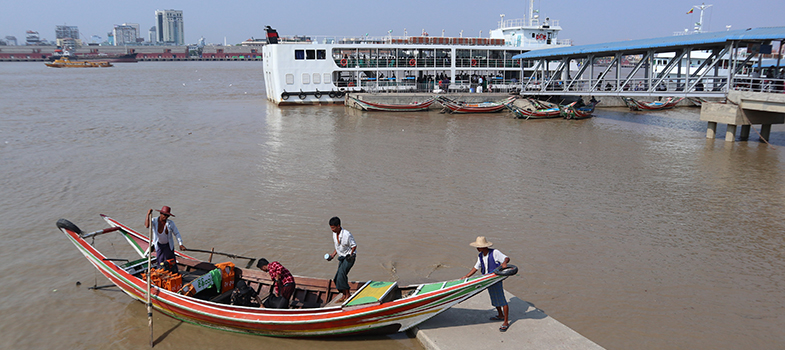Glossary
Special | A | B | C | D | E | F | G | H | I | J | K | L | M | N | O | P | Q | R | S | T | U | V | W | X | Y | Z | ALL
A |
|---|
AbstractionThe process of taking or extracting water from a natural source (rivers, lakes, groundwater aquifers) | |
Acid rainCaused
by atmospheric pollution as a result of sulphur dioxide and nitrogen compounds
in the air which combine with atmospheric water to form acids that fall as
precipitation | |
AquacultureThe
breeding, rearing, and harvesting of fish, shellfish, algae, and other
organisms in all types of water environments. It is basically farming in water,
rather than on land | |
AquifersSections of soil and rock that hold groundwater (like rocky sponges) | |
B |
|---|
BioaccumulationThe gradual accumulation of substances, such as pesticides or other
chemicals, in an organism | |
Biosphere reserveAn ecosystem with plants and animals of unusual scientific and natural
interest. It is a label given by UNESCO to help protect the sites | |
C |
|---|
E |
|---|
EcosystemA
biological community of interacting living organisms and their physical
environment. The living and physical components are linked together through
nutrient cycles and energy flows | |
EcotoxicologyThe
study of the effects of toxic chemicals on biological organisms | |
Energy MixThe
specific combination of different energy sources a country, for example, uses
to meet its energy consumption needs | |
ErosionWhere
particles or fragments are weathered from rock material | |
EutrophicationWhen
a water body becomes enriched with nutrients which lead to the growth of algae | |
EvaporationWhere water returns to the atmosphere because water is
heated up, so the water molecules change from liquid to gas | |
F |
|---|
FloodplainAn
area of flat land next to a river, formed mainly of river sediments and subject
to flooding | |
Fluvial sedimentThe
process where water is the key agent for erosion | |
Food chainHow
each living thing gets their energy | |
Food webSystems
of interlocking and interdependent food chains | |
Fossil waterAn ancient
body of water that has been contained in some undisturbed space, such as
subglacial lakes or aquifers, and may have laid there for millennia | |
G |
|---|
Gross domestic product | |
GroundwaterFresh water located in the subsurface pore space of soil and rocks
that collects within
aquifers | |
H |
|---|
Hydraulic fracturingAn
oil and gas well development process that typically involves injecting water,
sand, and chemicals under high pressure into a bedrock formation via the well | |
HydropowerEnergy
that can be harnessed from a continuous flow of water, such as a river. It is a
renewable source of energy because the water cycle is constantly renewed by the
sun | |
L |
|---|
Liquid wasteWastewater and sewage and include faeces and the contents of pit latrines and septic tanks | |
N |
|---|
Nonpoint source pollutionContamination
derived from diffuse sources, where there are many sources or the source is
unknown | |
Non-renewable water resourcesWater
resources that are not replenished or not for a very long time | |
P |
|---|
PercolatingWhere water slowly trickles downwards | |
Point source pollutionWhen contamination originates from a single source that can be traced | |
PolderingThe
building of dykes and drainage canals in low lying reclaimed coastal areas | |
R |
|---|
Recession agricultureWhere farmers capitalize on natural flows and sediments to irrigate and
fertilize crops on floodplains | |
Renewable water resourcesWater
resources that are rechargeable due to the hydrological cycle (water cycle),
comprising groundwater aquifers and surface water like rivers and lakes | |
Riverine floodingWhen
rivers fill to their capacity, often bursting their banks and causing flooding
alongside the river | |
S |
|---|
Sediment cycleStarts with the process of erosion, whereby particles or fragments are weathered from rock material followed by the erosion of minerals, their transport and deposition, then burial | |
Sediment loadParticles eroded and carried by water | |
Solid wasteAnything in solid form that is discarded as unwanted, such as garbage | |
StakeholderA
person, group or organization with an interest or concern in something | |
Surface waterWater from precipitation (rain, snow, hail, sleet) falls on the land and
runs over the surface collecting in rivers, streams and lakes, and ultimately drains
into oceans | |
T |
|---|
Tailing pondsAreas where waterborne refuse material from mining operations is pumped
to allow the sedimentation of solids from the water | |
Transboundary pollutionContamination from one country impacts another country by crossing its
borders | |
TranspirationThe process by which plants send water up through their stems, and
deliver it from their leaves back into the atmosphere | |
TurbidityWater that loses its transparency due to the presence of suspended
particulates | |
U |
|---|
Unconfined aquiferWhere
water seeps from the ground surface directly into the aquifer | |
W |
|---|
Water endowmentRenewable
water resources per capita (the total sustainable water available per
inhabitant) per year | |
Water tableThe top of the groundwater | |
For further information, take a look at our frequently asked questions which may give you the support you need.
If you have any concerns about anything on this site please get in contact with us here.
